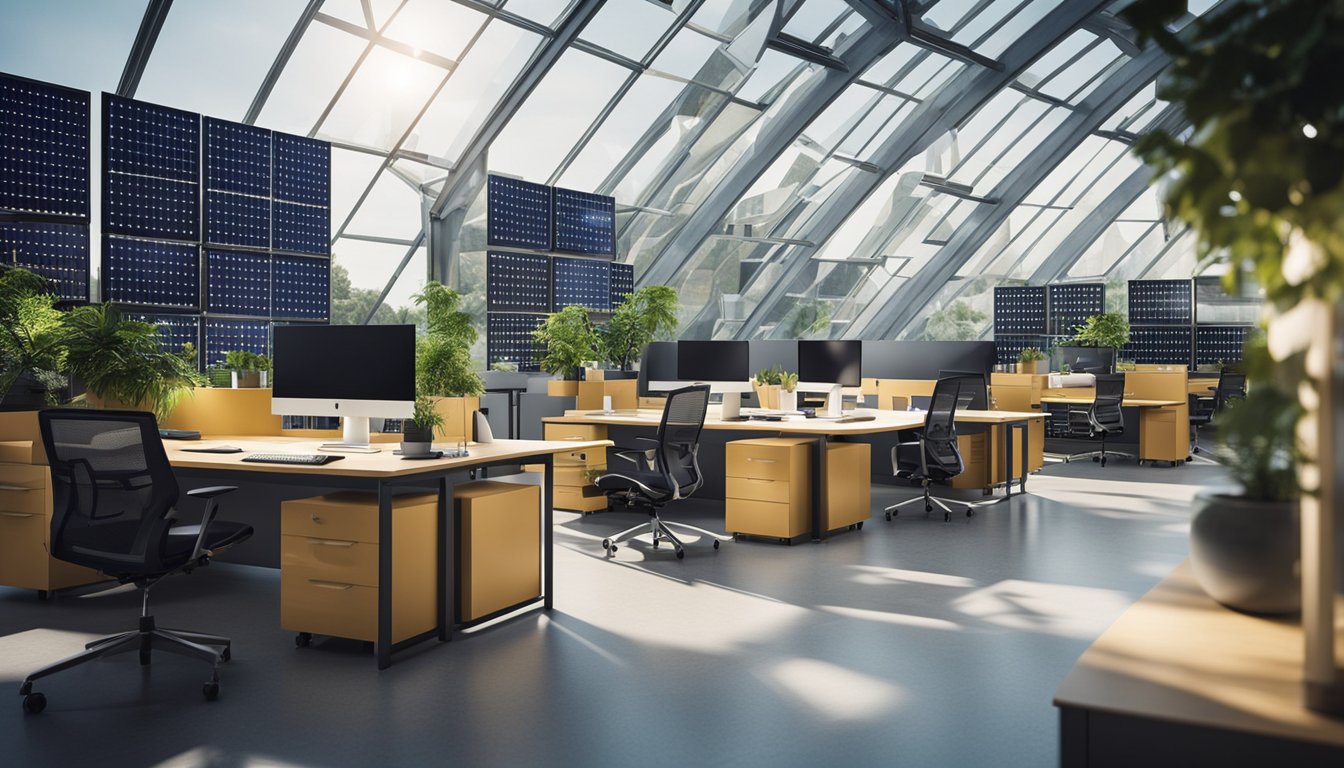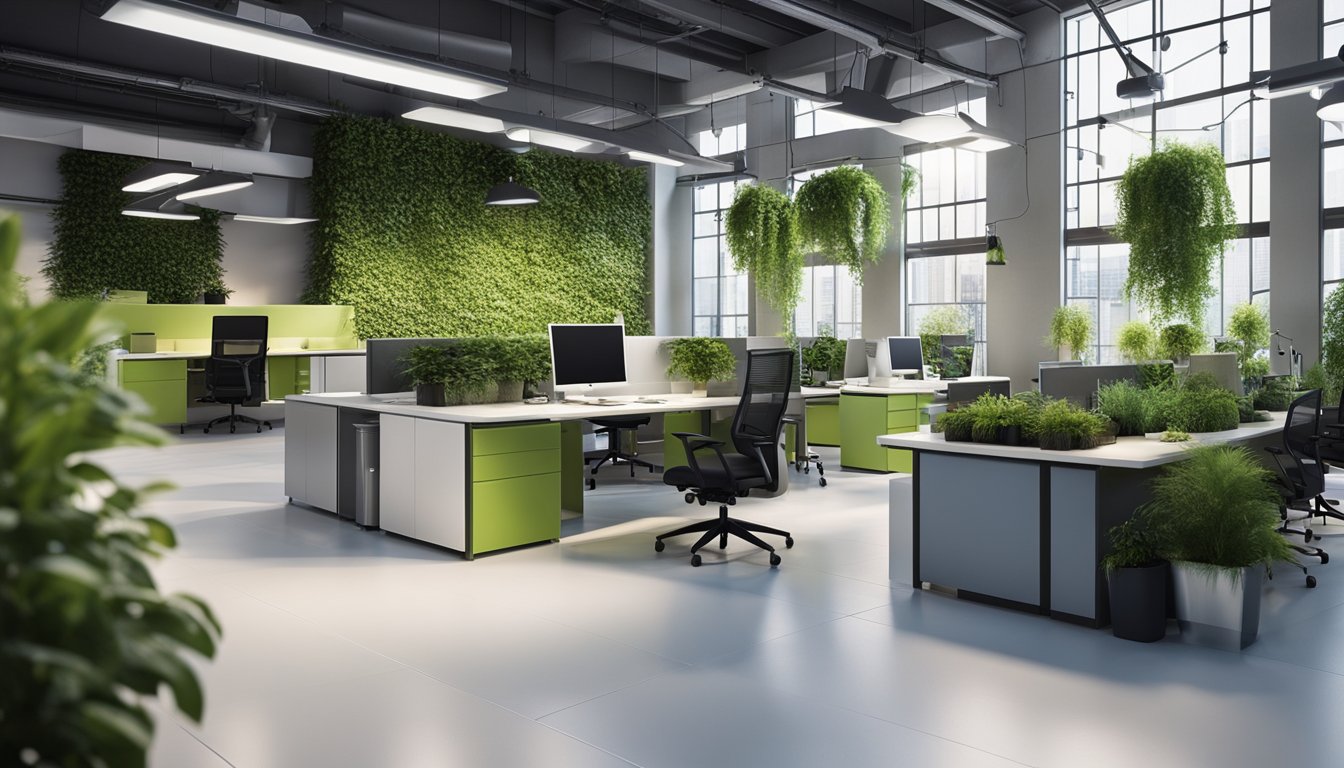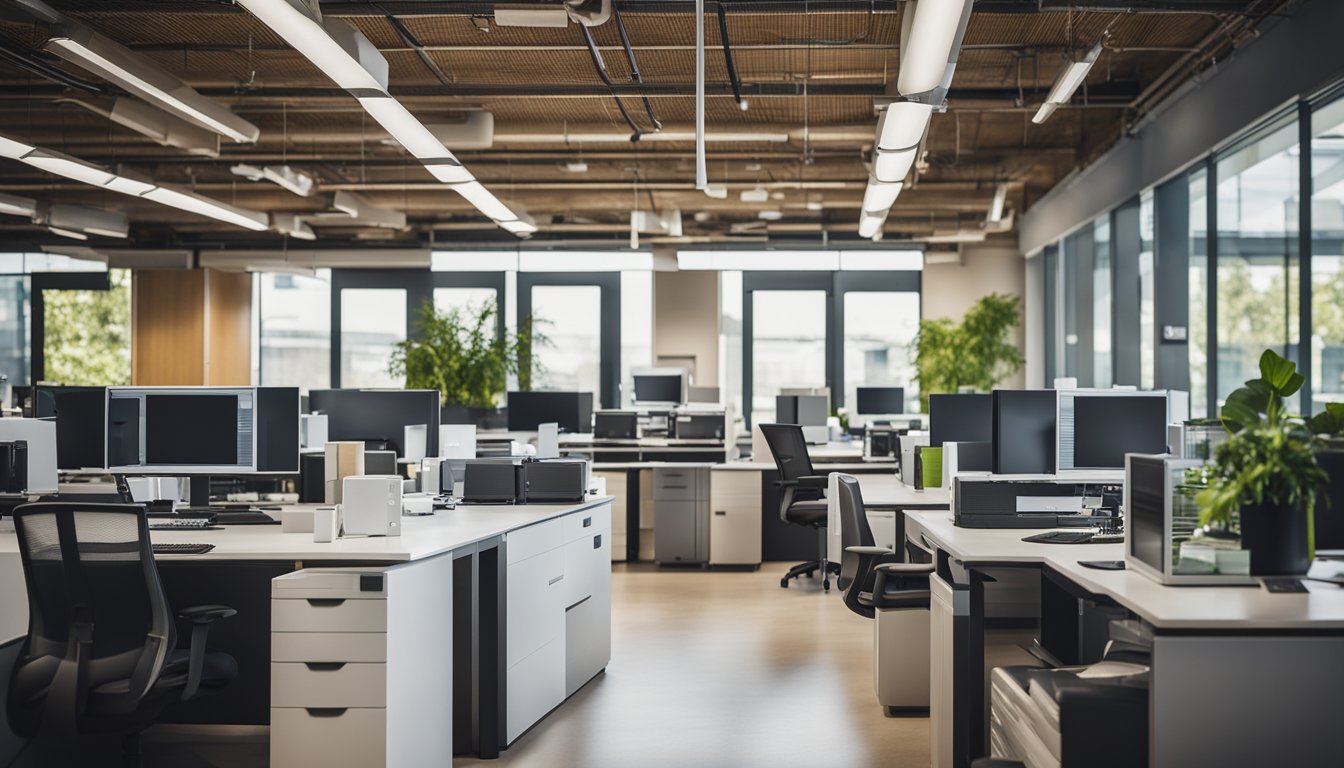Late updated: 29 Jul 2024 10:07
Written by: Amber Collins
Innovative Green Office Equipment For Businesses: Boosting Efficiency And Sustainability
As businesses continue to prioritise sustainability, the demand for innovative green office equipment has surged. From energy-efficient gadgets to eco-friendly furniture, companies are investing in tools that not only enhance productivity but also reduce their carbon footprint. Incorporating green office equipment is an effective strategy that helps businesses align with eco-friendly practices and promote environmental conservation.

The shift towards a sustainable office environment is driven by the need to minimise waste and conserve energy. Reusable thermal flasks, for instance, eliminate the need for single-use cups, contributing significantly to waste reduction. Similarly, utilising energy-saving devices like LED lights and smart power strips can substantially decrease energy consumption, paving the way for greener workplaces.
Moreover, creating an eco-friendly workspace is not just about the equipment but also about fostering a culture of sustainability. Encouraging employees to use reusable items and implement recycling programmes can make a substantial impact. By choosing innovative green office equipment, we can pave the way for more sustainable business operations.
Key Takeaways
- Green office equipment helps reduce carbon footprint and promote sustainability.
- Energy-efficient gadgets and reusable items contribute to waste and energy conservation.
- Cultivating a culture of sustainability within the workplace is crucial.
Green Office Equipment and Technology
In today's world, integrating energy efficiency and sustainability in the workplace is essential. We will explore three main areas: energy-efficient appliances, sustainable office technology, and innovative lighting solutions, all of which contribute to a greener office environment.
Energy-Efficient Appliances
Energy-efficient appliances play a crucial role in reducing electricity costs and minimising our carbon footprint. Energy Star certified devices, such as printers, computers, and refrigerators, are designed to consume less electricity while delivering high performance.
For instance, modern multifunction printers come with energy-saving modes and automatic duplex printing to conserve paper and power. Investing in energy-efficient heating, ventilation, and air conditioning (HVAC) systems can further reduce the energy consumption within an office building. Though these appliances might have higher initial costs, the long-term savings and environmental benefits are substantial.
Sustainable Office Technology
Adopting sustainable office technology can significantly enhance our productivity while promoting eco-friendly practices. Digital collaboration tools reduce the need for paper documents and support remote work, thus cutting down on commuting emissions.
Utilising recycled materials for office equipment, such as desks and chairs made from reclaimed wood, is another effective measure. Additionally, implementing a comprehensive recycling programme for electronic devices ensures proper disposal and contributes to the circular economy.
We should also consider eco-friendly commuting options, such as electric vehicle charging stations and bike racks, supporting employees who choose greener transportation methods. These innovations not only address climate change but also boost our company's reputation as an environmentally responsible entity.
Innovative Lighting Solutions
Innovative lighting solutions are key to creating a sustainable and energy-efficient office. LED lighting is a popular choice due to its long lifespan and reduced energy usage compared to traditional bulbs. Smart lighting systems that adjust brightness based on natural light availability can further save energy.
Incorporating natural light into office design can enhance employee well-being and productivity. Large windows and open-plan layouts facilitate the maximum use of daylight, reducing dependence on artificial lighting. Daylight sensors and dimmers allow us to optimise lighting conditions, ensuring comfortable working environments that conserve energy.
Adopting these green office equipment and technology solutions will not only help mitigate our impact on the environment but also improve our operational efficiency and profit margins. By choosing sustainable options, we contribute positively to the broader goal of addressing climate change.
Creating a Sustainable Office Environment

Creating a sustainable office environment involves a combination of eco-friendly design, green practices, and fostering employee engagement in sustainability initiatives. Each element not only helps in reducing the environmental impact but also enhances corporate responsibility and reputation.
Eco-Friendly Office Design
In designing eco-friendly office spaces, biophilic design plays a critical role. We incorporate natural elements such as indoor plants and natural light to create a healthier and more pleasant working environment.
Sustainable materials are crucial. Using recycled or sustainably-sourced furniture and fittings reduces waste and energy consumption. Energy-efficient windows and insulation also contribute to reducing the office's carbon footprint. Ergonomic designs enhance employee well-being and productivity, aligning with our corporate responsibility goals.
Green buildings often include solar panels, efficient lighting systems, and water-saving fixtures. These elements together create an office that is not only environmentally friendly but also cost-effective in the long term.
Green Practices and Policies
Implementing green practices at the office significantly reduces waste and emissions. Recycling programmes are vital. We can set up clearly marked recycling bins for paper, plastics, and metals throughout the office space.
Composting organic waste generates rich soil and reduces landfill usage. Using green cleaning products ensures that our office environment is free from harmful chemicals, protecting both employees and the planet.
Energy conservation policies like turning off lights and computers when not in use also make a significant impact. Introducing a waste reduction policy encourages mindful consumption of office supplies and effective reuse and recycling strategies.
Employee Engagement in Sustainability
Employee engagement is essential for the success of sustainability efforts. Creating Green Teams comprised of motivated staff members can lead various environmental initiatives and keep sustainability a priority.
We can offer training and education on sustainable practices, helping employees understand their role in reducing the office's environmental impact. Incentives and recognition programmes can encourage participation and innovation in sustainability practices.
Encouraging carpooling, cycling, or using public transport to commute can reduce our carbon footprint. Hosting sustainable events and challenges, like "Zero Waste Week," keeps the office engaged and enthusiastic about environmental efforts.
By focusing on these key areas, we can build a sustainable office that benefits both our business and the planet.
Frequently Asked Questions

Green office equipment and sustainable practices can significantly reduce a business’s environmental footprint. Our FAQs address key concerns on implementing a green office programme, eco-friendly innovations in office supplies, and sustainable corporate strategies.
How can a company effectively implement a green office programme?
To effectively implement a green office programme, we need to start with an environmental audit to identify areas of improvement. Forming a green team to oversee sustainability initiatives can help in ensuring consistent efforts. Setting measurable goals and providing training for employees enhances awareness and engagement.
What measures can businesses take to ensure their office spaces are more environmentally friendly?
Energy-efficient lighting, recycling programs, and using non-toxic cleaning supplies are essential measures. We can also invest in renewable energy sources and encourage telecommuting. Installing water-saving fixtures and opting for sustainable furniture further contributes to a greener office environment.
Which eco-friendly innovations in office equipment are currently available for businesses?
Eco-friendly office equipment ranges from energy-efficient printers and computers to solar-powered chargers. We should consider investing in recycled paper products and biodegradable office supplies. Many companies now offer furniture made from sustainable materials like bamboo and reclaimed wood.
What sustainable initiatives could an office undertake monthly to promote environmental awareness?
Monthly initiatives might include hosting electronic waste recycling drives or workshops on sustainable practices. We could also implement office-wide challenges to reduce energy consumption. Regularly updating staff on sustainability achievements through newsletters helps maintain momentum and awareness.
In what ways can office supplies be environmentally conscious and sustainable?
Using refillable ink cartridges, recycled paper, and compostable packaging materials are some ways. Opting for suppliers that prioritise sustainability and reducing single-use plastics in the office also make a big difference. We should encourage digital documents to minimise paper usage.
What creative strategies can be employed to enhance sustainability within a corporate setting?
We might incorporate green walls or indoor plants to improve air quality and aesthetics. Implementing bike-to-work programmes and offering incentives for carpooling can reduce our carbon footprint. Encouraging employees to bring their own reusable water bottles and coffee mugs also promotes a culture of sustainability.
